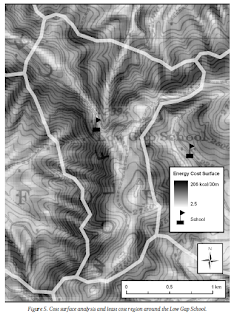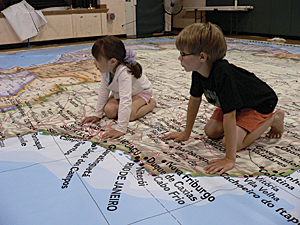Environmental public health systems have recently taken much interest into the adoption of a tool used for evaluating spatial relationships between health and environmental risk factors. The Center for Disease Control’s (CDC) program, National Environmental Public Health Tracking (EPHT) has been using these tools to collect and analyze representing environmental hazards, human exposures to environmental hazards and noninfectious health effects potentially related to these exposures.
The Rapid Inquiry Facility (RIF) is a tool developed by the U.K Small Area Health Statistics Unit to assist in providing rapid response and advice about unusually high clusters of disease. The RIF assists in linking and assessing environmental exposures, health outcomes, and risks for groups. ArcGIS utilizes RIF to calculate directly standardized rates and indirectly standardized rate ratios a study population.
The RIF is capable of two types of analysis: risk analysis and disease mapping. Risk analysis evaluates associations between health and the proximity and/or exposure to a certain risk factor. Disease mapping provides a visual representation of mortality and/or morbidity rates and patterns of health. The article details two separate case studies, one risk analysis and one disease-mapping analysis.
The risk analysis study was conducted by the Utah Department of Health in response to community requests to investigate a perceived excess of leukemia. Multiple oil refineries are located in Utah and in 2004, 161,000 kg of hazardous air emissions were reported to be released from the refineries. Health conditions, such as leukemia, multiple mycloma, Hodgkin’s lymphoma and non-Hodgkin’s lymphoma, have been linked to hazardous air emissions from oil refineries. To identify the communities that were likely affected, a risk-analysis was performed on the census blocks located within 2.5 km and between 2.5-5 km of the refineries.
Cancer incidence data for the types listed above were gathered from the Utah Cancer Registry and georeferenced by the Utah Environmental Public Health Tracking network. The analysis showed there only to be an excess risk on non-Hodgkin’s lymphoma in populations living around the oil refineries. Males living close to the refineries had the highest risk, which was likely due to occupational exposure. However, many of the refinery employees were not included because they lived outside of the study zone, which potentially could provide more significant results.
The United Kingdom Health Protection Agency utilized disease mapping to assess the hypothesis that residents of Norwich County had an increased risk of esophageal cancer from 1984-2003 due to toxic agents that were released by the British Ministry of Defense. The analysis was done at standard table (ST) ward level, which is the unit used for U.K. administrative geography and refers to the spatial units used for local elections. Indirect standardized incidence ratios and standardized mortality rates were calculated and risks were adjusted for age, sex, and socioeconomic status. England and Wales were used as reference populations.
The analysis found that risks of esophageal cancer incidence and mortality were not significantly higher in Norwich. Additionally, there was no significant difference in the relative risks of males and females.
While both these studies did not show much significant result, they nevertheless provide useful information and resources for future studies interested in linking health, population data, and environmental issues. Both methods have many factors that could potentially change the results, such as methods for identifying which populations or at risk or accounting for external environmental factors, such as topography. While individual-level associations and causal relationships cannot be gathered using RIF, initial analyses of environmental health problems can be conducted and used as a reference for future, more in-depth studies.































 Researchers classify markets into those that operate on weekdays or weekends, and whether they operate in the morning, afternoon, or evening. They also classify customers into working and nonworking, which has enormous influence on when and where customers might shop. The models adjust travel distances by the time of day which determines whether people make their shopping trips from home, work, or other locations.
Researchers classify markets into those that operate on weekdays or weekends, and whether they operate in the morning, afternoon, or evening. They also classify customers into working and nonworking, which has enormous influence on when and where customers might shop. The models adjust travel distances by the time of day which determines whether people make their shopping trips from home, work, or other locations.


